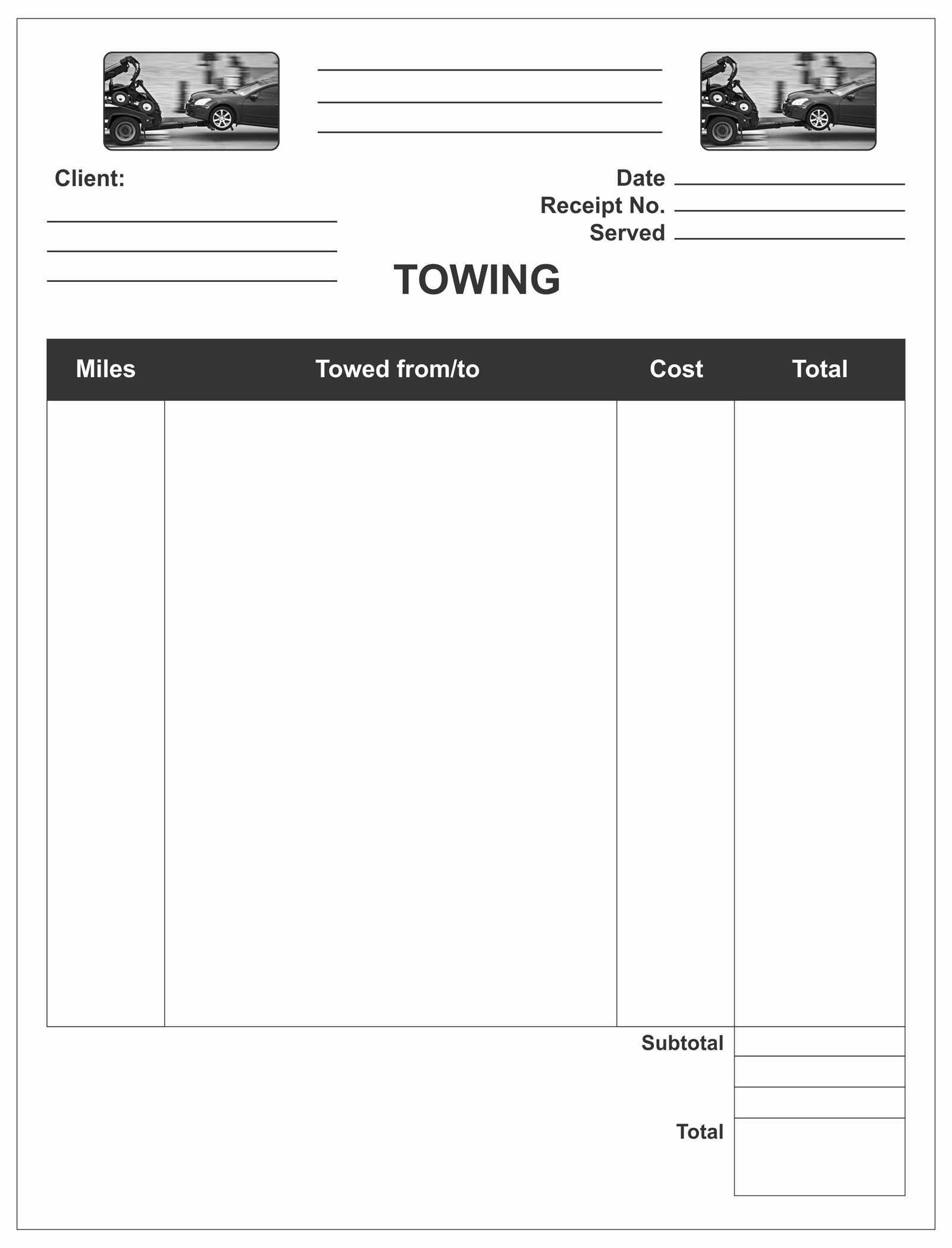
To create a tow truck receipt template, focus on including key details that reflect the services provided and payment received. Start with clear headers like “Receipt,” “Date,” and “Invoice Number” for easy identification. Make sure to specify the towing service location, including the pickup and drop-off addresses. This helps to clarify the scope of the service rendered.
List each service item separately with corresponding prices, such as towing charges, mileage, waiting time, and any additional fees like storage or administrative costs. For added clarity, use a table format to break down each line item. Don’t forget to mention payment methods (credit card, cash, etc.) to avoid future confusion.
End the receipt with contact information for both the towing company and the customer, ensuring that both parties have a record of their interaction. It’s also helpful to include a thank-you message or a reminder about your services for future reference. By following these guidelines, your receipt will be clear, accurate, and professional.
Create Tow Truck Receipt Template
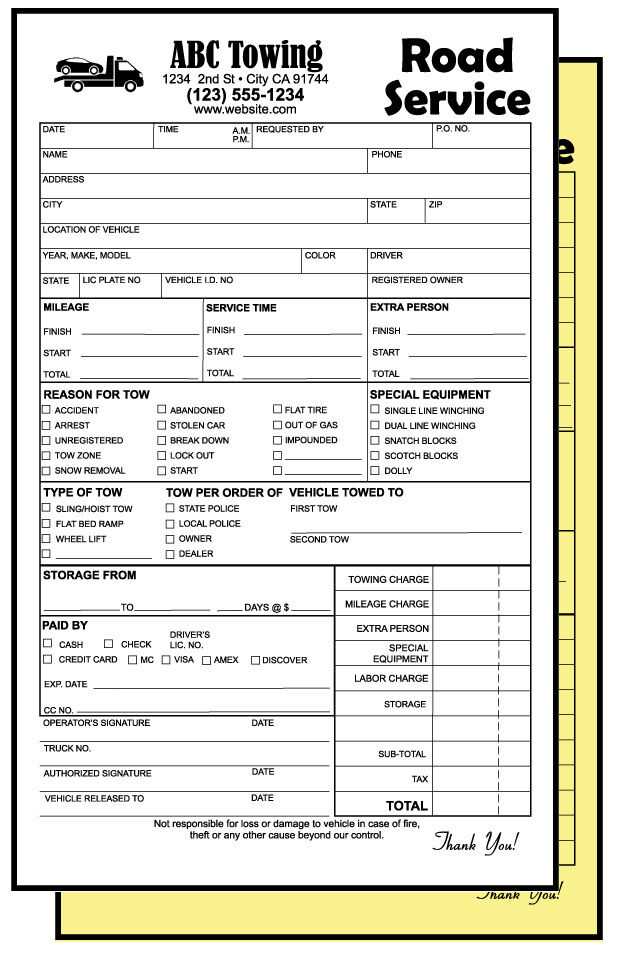
Design your tow truck receipt template with clear, structured sections. Include the company name, logo, and contact information at the top. This ensures that customers can quickly reach you if needed.
1. Header Details
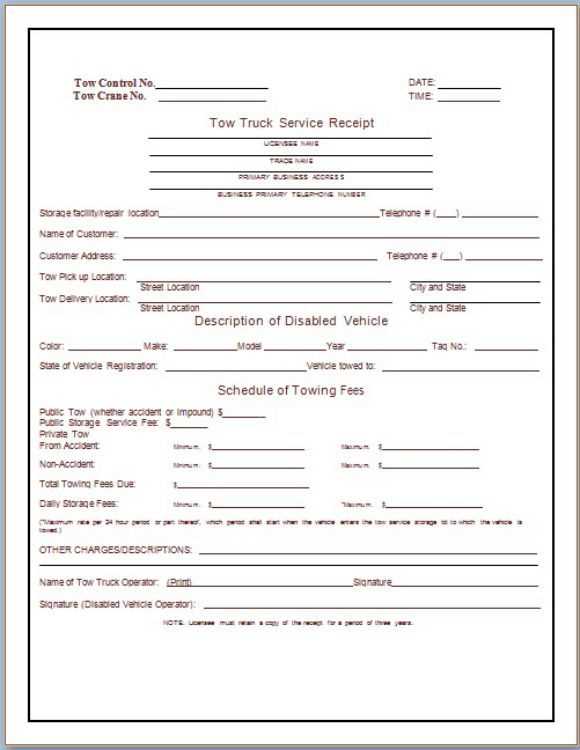
Incorporate the name of your towing business and relevant contact information. Include phone numbers, email, and business address. Also, add a unique invoice number and date for easy tracking of receipts.
2. Customer Information

Provide space for the customer’s name, address, and contact number. Include the vehicle details, such as make, model, year, and license plate number. This helps to verify the service provided to a specific vehicle.
3. Service Details
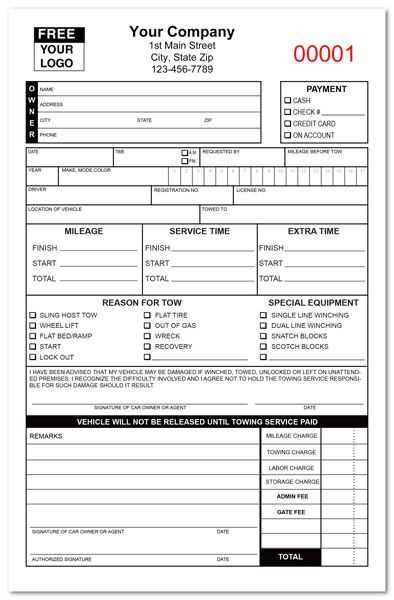
Clearly list the services rendered. Specify whether the service was a local tow, long-distance, or emergency. Include the rate per mile or hour, depending on your pricing structure. Don’t forget to show the total cost for the tow and any additional fees, like storage or service charges.
4. Payment Information
Include payment details such as the payment method (cash, card, or check) and the amount paid. Leave space for a signature line, where both the customer and the towing service representative can sign to confirm the transaction.
5. Footer
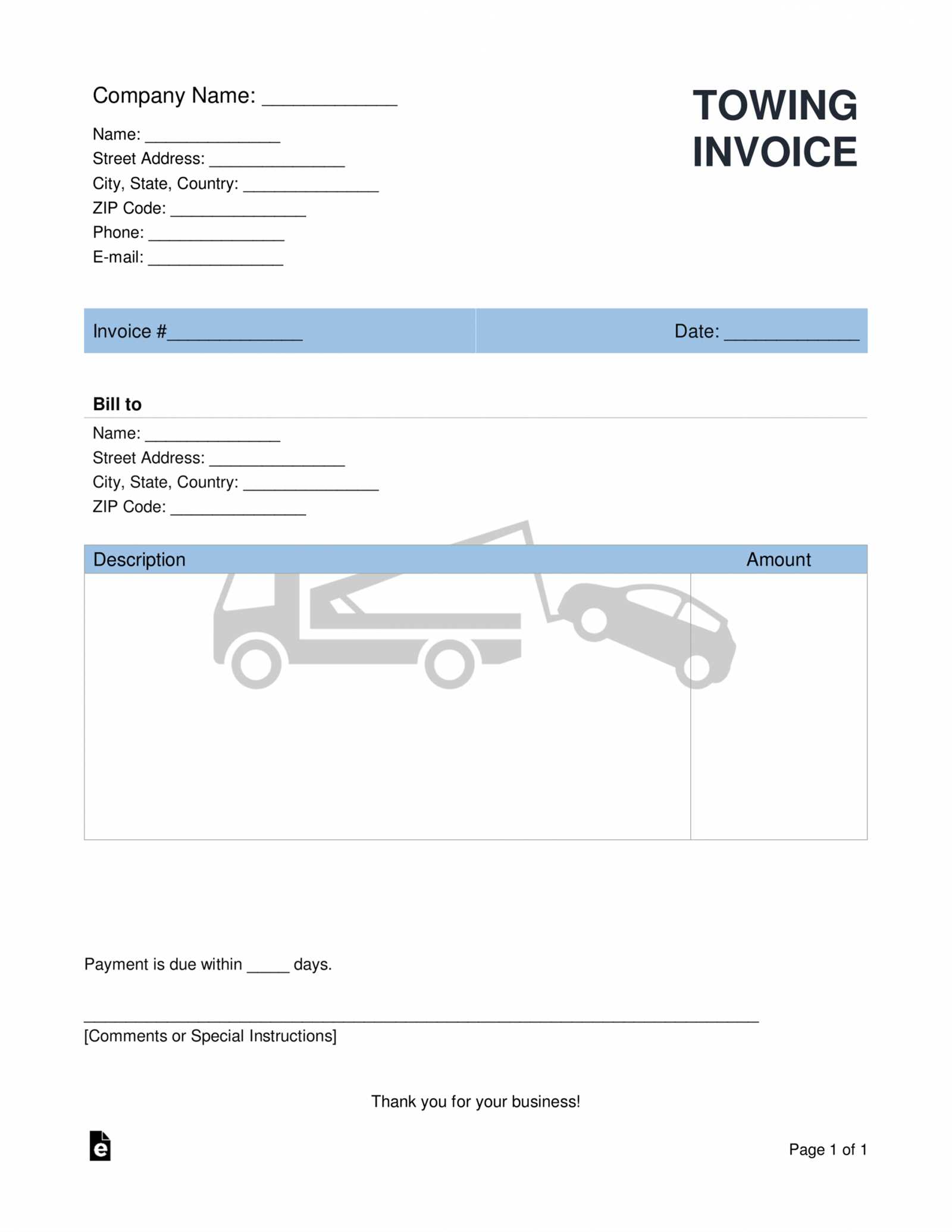
At the bottom, add any disclaimers or notes, such as liability information or terms and conditions for the tow. This is also a good spot to include your social media handles or website URL for future reference.
Designing a Basic Tow Truck Receipt Layout
Begin with clear section divisions. The header should display the tow truck company’s name, logo, and contact information prominently at the top. Below that, list the receipt’s unique identification number, followed by the date and time of the tow service.
Service Details
Next, outline the specifics of the tow service. Include the pick-up and drop-off locations, type of service (e.g., emergency tow, flatbed, etc.), and a brief description of the vehicle being towed (make, model, color). Each item should have a corresponding space for easy readability.
Cost Breakdown
List all charges clearly, separating fees for towing, mileage, labor, and any additional services provided. Add a subtotal before applying taxes. Be sure to show any discounts or special rates applied, along with the total amount due. Finally, leave space for payment method and a signature line if needed.
End the receipt with a thank you message and a reminder of the company’s contact details for future service or questions. Keep the layout simple, organized, and professional to ensure all information is easy to find and understand.
Including Detailed Charges and Payment Information
Clearly list all charges to avoid confusion. Start with the base tow fee, followed by any additional services such as mileage, vehicle storage, or after-hours fees. Provide exact amounts for each item, breaking down the cost transparently. For example, specify the rate per mile or the hourly rate for recovery services.
Itemizing Charges
Each charge should have a description, including quantities and unit rates. If applicable, include charges for vehicle damage assessment, special equipment usage (e.g., flatbed), or labor hours. Ensure every item is easily understandable for the customer, eliminating any potential misunderstandings.
Payment Information
Include payment methods accepted, such as credit cards, cash, or electronic transfers. Make clear any taxes or extra fees related to the payment process. If a deposit is required before services are rendered, specify the amount. A due date for full payment should also be indicated if applicable.
By breaking down all charges and providing clear payment instructions, you enhance the transparency and professionalism of your receipt template.
Customizing Tow Truck Receipt Templates for Different Services
To tailor a tow truck receipt template for various services, it’s key to include specific details that match the service provided. This allows for clear communication with customers and helps maintain transparency in billing.
- Basic Towing Service: Include the vehicle’s make, model, and VIN number, pickup and drop-off locations, time spent, and any base towing charges. Adding a section for extra charges, such as distance traveled or road conditions, will help clarify costs.
- Emergency Towing: Emergency services require a breakdown of labor, time of call, and the nature of the emergency (e.g., accident, breakdown). Specify whether the vehicle was towed to a repair shop or a storage facility, along with associated fees.
- Heavy Duty Towing: For heavy-duty trucks, list the weight of the towed vehicle, any special equipment used, and the complexity of the job. Provide itemized costs for the towing service and any additional manpower or machinery required.
- Winching Services: When including winching, specify the terrain, the winch capacity, and any additional charges for difficult access or time spent. This allows customers to understand the reason behind the higher cost.
- Roadside Assistance: Roadside services such as tire changes or fuel delivery should list the exact service performed, time spent, and materials used. Be sure to include details like fuel type for delivery or tire specifications.
By adjusting the template based on the service, you can provide clear and accurate documentation that helps build trust and reduces misunderstandings. Including service-specific fields in your template will streamline your invoicing process and improve client satisfaction.


